| |
The history of the Bombay film industry is full of such ironies. Some of these have been recorded by historians; others remain matters of conjecture because no one, at the moment, made the effort of taking or maintaining notes. For instance, it is known, at least among film historians, that the first Bombay film to deal with inter-caste marriage, Acchut Kanya (1936) was an Indo-German co-production (fig. 2). This is not surprising: the German contribution to world cinema and, in particular, the technical aspects of Indian cinema was probably far more important in the 1930s than that of any other film-making nation. What is surprising is the overlooked footnote that the film, basically with an anti-caste and pro-intermarriage agenda, was ‘launched’ in Germany under the Nazi regime, flagged off by Joseph Goebbels in Berlin. Did Goebbels and other Nazi ideologues ever realise that the film they had helped produce was, basically, opposed to their central agenda of ‘racial’ purity?
Similarly, it is known that Bombay cinema depended heavily in its early years on ‘mythologicals’ and ‘historicals’ featuring Gods, Goddesses and legendary emperors, a topic it has often returned to with increasing sophistication (and nationalism) over the years. What is less well known is the fact that the first real ‘success’ in India was a film – not made in India – called Passion Play. Shown in India in 1901, it featured the life of Christ, with all the associated drama of miraculous birth, crucifixion and resurrection. This was very popular with European and Christian audiences in India, but it also attracted a large number of Hindus and Muslims. Were these other Indians attracted only by the drama of the spectacle, or was the story also read in an allegorical manner given demands for self-rule (and later, independence) etc which were in an early phase just then?
Phalke sees the light
Interestingly, as Bombay grew, its film industry became one of the greatest melting pots of the world. Apart from Anglo-Indians (who were very popular in the silent era, but suffered a decline after that), almost all kinds of Indians participated equally in the industry right from the start and continue to do so today. Even the eclipse of Anglo-Indians had to do with three factors that cannot be attributed to prejudice: with the coming of the talkies (1931 – Alam Ara), some Anglo-Indians could not switch to fluent Hindustani; as a community, Anglo-Indians left India in large numbers after independence in 1947; and finally, by the 1940s, Indian women from respectable families started entering cinema too. Earlier on, film-makers were dependent, with a few exceptions, on Indian women from the traditional ‘tawaif’ (courtesan) communities, or from very ‘Westernised’ families, which mostly meant Anglo-Indians. |
|
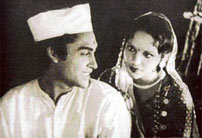
Fig. 2. Acchut Kanya (1936) was the first Bombay film to deal with inter-caste marriage. |
|
| |
Again, in the middle of this melting pot of prostitutes, ‘tawaifs’, people from unknown backgrounds or ‘lower’ castes, Anglo-Indian actresses, drifters from small places etc in the 1920s and 30s, we also find film-makers from ‘pure caste’ Brahmin and privileged backgrounds, such as Dadasaheb Phalke (fig. 3). Son of a famous Brahmin scholar and professor of Sanskrit, Phalke was still searching for a satisfying career at the age of 40 when, in 1920, he saw Life of Christ. It would not be too much to say that he saw the light. Pledging his life insurance policy, borrowing from friends etc, he sailed for England in February 1912 to purchase what he needed to set up a film unit in India and learn the technical ropes of film-making. Returning to India within a month, with a Williamson camera and other basic equipment, Phalke made the first feature length Indian film: Raja Harishchandra (1913). It was 3700 feet long and told the story of a king who survives in Indian legends as a symbol of truth and justice. The film, distributed by Phalke himself, was a huge success and enabled him to establish a studio at Nasik, some distance from Bombay.
The birth of the term 'Bollywood'
Phalke’s Nasik studio became the model studio for Indians until the 1950s, when trends and financial aspects of film-making changed under the impact of World War II (fig. 4). But until then, for about three decades, the Indian film industry was based on what can only be called ‘family studios’. These were huge, sprawling establishments, containing families (and zoos in some cases), and basically functioning like a self-contained town. In his essays published later in Pakistan, Saadat Hasan Manto, the famous Urdu writer who (like most major Urdu writers and poets of his generation) also worked as a scriptwriter in Bombay, provides some interesting vignettes of these studios and the people working for them.
Some of these people are familiar to Indian film fans today. Ashok Kumar, for instance, was the first real star of Bombay cinema and survived into the 1990s as a thespian actor – though even at his height as a ‘hero’ in the 1940s, Ashok Kumar was paid only a few thousand rupees(fig. 5). This was not a mean sum in those days, but it does not even begin to compare to the millions commanded by Amitabh Bachchan or Shahrukh Khan today.
But many of the other colourful and vital figures of that era have been forgotten even in Bombay. If anything, the Bombay film industry is greased with money: Guru Dutt, another major film-maker and director of the era, made some memorable films around this topic. Today, when the term ‘Bollywood’ (concocted in the 1970-80s) has usurped all the space of Bombay cinema, it might seem a waste of time (and money) to talk about those early days. For the term ‘Bollywood’, first concocted in glossy Indian film magazines in the 1970-80s, does not even cover all the films coming out of Bombay, let alone Calcutta and the thriving centres of film-making in South India. ‘Bollywood’ describes primarily ‘commercial’ films made in Bombay – films featuring song, dance, action, drama, and often borrowing features and ideas from Hollywood.
This change of critical focus was not necessarily a regression. Indian popular cinema – what came to be called ‘Bollywood’ and is still better described in India as ‘masala’ (spicy) films – had been largely ignored by cinema critics and audiences in the West. While it had won fans in Africa, other parts of Asia and Eastern Europe – Indian film stars Raj Kapoor and Nargis were mobbed by fans in Moscow in the 1960s – most European critics focussed only on what was called ‘parallel’ cinema in India. These were serious art films. Many of them were excellent. But so were the popular films made by, say, Raj Kapoor. With the rise of brand-name ‘Bollywood’ and its acceptance in the West about ten years ago, all this was to change. However, it was to change at the cost of what had also existed earlier on, and continues to exist today: Indian films, like Mr and Mrs Iyer, that do not fit the ‘Bollywood’ mould. It is a sad commentary on the state of affairs in ‘post-independent’ India that a dubious echo of Hollywood has almost entirely obscured even the other ‘international’ influences on the Indian film industry: pre-independence cinema was perhaps more heavily indebted to German and British film making than to American, and in the 1960s and 70s individual French, Russian and Japanese film-makers effected parallel cinema in a significant fashion.
Well into the 1980s, it was clear that ‘Bollywood’ referred only to the dominant commercial sections of the Bombay film industry: the makers of ‘masala’ films, some of which, like Raj Kapoor’s Bobby or Sippy’s Sholay, could be exceptionally good. It definitely did not refer to parallel or art cinema made in Bombay, let alone elsewhere in India, some of which again, like Govind Nihalani’s Aakrosh or Mrinal Sen’s Khandhar, were exceptionally good. More interestingly, it is doubtful that the term ‘Bollywood films’ applied fully even to the ‘middle cinema’ of directors like Hrishikesh Mukherjee.
Two Devdas
Today, when ‘Bollywood’ seems to cover all possible spaces of film-making from and in India, and not just for foreign fans but also (sadly) for the chattering classes in India, it is necessary to see what the shift from pre-Bollywood commercial cinema to Bollywood commercial cinema has implied. For the rise and hegemony of the term is a reflection of sweeping changes, for good and bad, in India, and in India’s relationship to ‘globalisation’. There is no point comparing parallel/art cinema to Bollywood films: the two speak different languages. It would be as pointless as comparing John Berger to Dan Brown. But it pays to look at the changes in ‘mainstream and commercial’ films on both sides of the ‘Bollywood’ divide. |
|
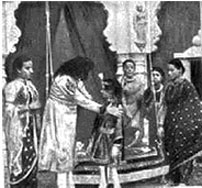
Fig. 3. Director-screenwriter-producer Dadasaheb Phalke features prominently in the history of Indian cinema. His debut film Raja Harishchandra (1913) is held to be the first feature length Indian film.
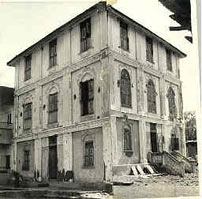
Fig. 4. The success of the movie Raja Harishchandra enabled Phalke to establish a film studio at Nasik, some distance from Bombay.
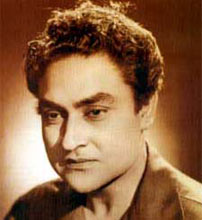
Fig. 5. Ashok Kumar, for instance, was the first real star of Bombay cinema and survived into the 1990s as a thespian actor. |
|
| |
One way to do so is to compare Bimal Roy’s Devdas (1955) to Sanjay Leela Bhansali’s Devdas (2002) (fig. 6-7). Both films were important commercial successes, featuring the leading male star and major actresses of their generations, and both achieved success in mainstream critical terms: Roy’s Devdas won four Filmfare awards in India and Bhansali’s won 10 Filmfare awards. Devdas I (for the sake of convenience) starred Dilip Kumar as Devdas, Suchitra Sen as Paro and Vyjantimala as Chandramukhi; Devdas II had Shahrukh Khan as Devdas, Aishwarya Rai as Paro and Madhuri Dixit as Chandramukhi.
While both the Devdas films relate differently to Sarat Chandra’s foundational novel, Debdas (written in Bangla in 1901, published 1917), that relationship is not my concern (fig. 8). Devdas I inserts Sarat Chandra’s text into the film footage: it begins with a page of the story, in Hindi translation, and moves on to scenes from the childhood of Devdas and Paro. Devdas II cuts directly from glossy-golden credits to a palatial house and the narrative starts with the return of Khan-Devdas as an adult. Noticeably, in the context of Bollywood and post-Hindutva (an ideology that emphasises ‘parivaar’ or ‘family’ in its political self-description) cinema, Devdas II presents a large, happy, united family, including well-clad and contented servants (fig. ) [Fig. ]. This contrasts starkly to Devdas I, where the family is rife with internal tensions, where lines of affection crisscross lines of disaffection, and where the servants are not dressed like middle-class businessmen at a religious event (fig. ) [Fig. ]. When dissension surfaces in Devdas II, it is presented in the patriarchal form of female evil – a sister-in-law who manipulates and connives in the ‘best’ traditions of ‘vamps’. Such conscious evil, let alone in a standard sexist version, is missing in Devdas I, where internal dissension is due to differences of character, perception and values, not due to cold-hearted calculation and evil manipulation. This in itself is significant, for the calculating villain grew with the rise of Bollywood just as surely as ‘evil’ as an explanation of difference and opposition grew with the rise of Bush-ism internationally. Pre-Bollywood films did not always contain villains, and the villainy they depicted was often capable of redemption: it did not have to be stamped out, root and branch, with the villain. The later tendency starts taking root with films like Sholay only in the 1970s.
Slight changes but very different films
Devdas II follows the storyline of Devdas I and retains the major dramatic scenes. The storyline is simple: rich boy (Devdas) grows up with poor girl (Paro), but cannot marry her. Hurt by a letter he writes to her, Paro lets her parents arrange her marriage. Devdas takes to drink and loose ways, has a courtesan (Chandramukhi) fall in love with him but to no avail, and finally dies outside the house of Paro and her in-laws.
While alike in outline, slight changes in the crucial scenes make for two very different films. They are united by a certain male ethos and a degree of misogyny, but they are disunited by almost everything else.
In Devdas I, after scenes from Paro’s and Devdas’s childhood, the latter is sent to Calcutta, partly for his education and partly because he is a charming boy capable of sudden acts of anger, petulance and disobedience. He is introduced in the film in a scene that has him throwing, under faint provocation, stones at his classmates, while he is also depicted as a boy capable of warmth, affection, charm and commitment. The Calcutta he is sent to is only a few hours away by train, and Kumar-Devdas returns to his village at least once every year in Devdas I. In Devdas II – and this reveals much about the Bollywood of India’s chattering classes today – Khan-Devdas returns “after 10 years” from “abroad” and “London” (fig. 9). If Kumar-Devdas wears the dress – partly Indian and partly Western – of the Bengali semi-urban middle class in Devdas I, Khan-Devdas enters clad in designer Western regalia, replete with hat and bow-tie, and coolly lights up a cigarette – a rather implausible act in an age when young people seldom smoked cigarettes within smelling distance of elders – in Paro’s family house!
In a psychological sense, the Paro-Devdas relationship is both more complex and more probable in Devdas I than in Devdas II. More probable because it grows through the years, with the two meeting for vacations almost every year. In Devdas II, however, the sartorial gloss and technical slickness that is added to the story comes with greater ‘traditionalism’ and obscurantism: the old myth of a childhood soul mate, a love that lasts across ten years without any real contact (and only five letters), and whose metaphysical character is highlighted by the first song in the film.
This song has Rai-Paro gyrating with a dia-lamp that none of the other dancers can blow out, because it symbolises the light of her love for Khan-Devdas. Underlining one minor difference between pre- and post-Bollywood song-choreography, this song features Rai-Paro and a large band of other slim dancers. The number of background dancers hopping around with the hero or heroine has increased with the rise of Bollywood. Films like Devdas I, or even later films like Umrao Jaan, seldom featured more than one or two dancers in a song sequence. I have not been able to make up my mind whether this crowding of song-dance scenes in Bollywood films is a reflection of the over-crowding of Indian urban spaces in recent years or an index of the bigger-is-better, more-is-merrier liberalist-Capitalist ideology of Bollywood! [and/or because of the aesthetic potential involved in choreographing both camera – typically crane movements – and dancers.]
Family connections
Despite the fact that both films feature very competent commercial actors, psychological depth appears to be largely lacking in Devdas II. There is much more gloss on the surface: the spectacle is visually delightful and far more slick than Devdas I, the acting more ‘pacey’ and smooth, the situations more confrontational. But it all stays on the surface.
For instance, Khan-Devdas in II is by no means as torn a character as Kumar-Devdas in I. Both are privileged ‘male’ figures, men who are not really grateful for the fact that beautiful, intelligent women fall in love with them, and quite capable of indulgent self-pity. They take it for granted – and this is not surprising, given the socio-historical context – that women fall in love with them and want to do their bidding much of the time. But in Kumar-Devdas, this is accompanied by other factors: Kumar-Devdas in the first version comes across as a person torn by inner feelings of resentment, anger and doubt, and without a very clear self-understanding. He fails to comprehend the love of both the women until it is spelled out to him, literally, and then tries to run away from both – though he soon regrets his attempt to distance Paro. He is presented as throwing stones at classmates, and once strikes Paro – when she rejects him out of hurt feelings – leaving a scar on her forehead. He is a man both charming and destructive, with the desire and capacity for deep love and commitment and also a fear of ‘ties’ (as he puts it), a privileged cynicism about humanity and womanhood.
One can read Devdas I as a story of the partial growth of Kumar-Devdas from a confused, indulgent youth, who pities himself for the loss of Paro’s hand, to a more mature man who, after his stay with Chandramukhi, learns to pity Paro for her sufferings too. There is also a suggestion towards the end that Kumar-Devdas lacks something in himself, something that makes it impossible for him to be with people he loves and who love him: his mother, Paro, the faithful family servant, and finally Chandramukhi, the courtesan who changes her life for him and whom he does claim to ‘love’. His tragedy, towards the end, is partly a result of his character, which is a character of complexities and contradictions. When he says ‘Everybody’s mine but I am nobody’s’ or ‘I want to run away from myself’ towards the end, he is not merely indulging in the self-pity he was prone to earlier on.
Khan-Devdas in Devdas II is a flatter person, less tormented, more confident, individualised only by his short temper as against the mixed emotions of Kumar-Devdas. Significantly, Khan-Devdas in II has a simpler relationship to Paro. While Kumar-Devdas is surprised by Paro’s declaration of love, and realises the depth of his own love just a bit too late, Khan-Devdas returns from ‘abroad’ fully informed of his own ‘manly’ feelings. He tells Paro that he cannot bear another man touching her (after ten years away from her), thus laying very macho claim to her femininity. Such claims, despite the patriarchal tropes common to both films, are less obvious in Devdas I. Moreover, the Paro of Devdas I is a more self-aware and bold character than the Paro of Devdas II: the first declaration of adult love between the two in Devdas I is initiated by her, when she openly goes to Devdas’s room at night. In Devdas II, this scene is repeated, but it has little value, as Devdas has already expressed his love and possessiveness. Its significance in Devdas II is a male-male confrontation: that between Devdas and his father as Paro leaves the room, a confrontation that does not take place in Devdas I.
If Devdas II introduces a few new ‘family connections’, it also exaggerates the main ones into caricature: the father in Devdas I is strict, in Devdas II he is unfeeling, crudely pompous and cruel, and so on and so forth. All along, psychological subtleties are lost or simplified in Devdas II, as the entire drama is reduced to standard TV-fare of contemporary times: the feuds of possessive, fickle, proud, jealous or ambitious women in a rich family, a common theme of popular TV serials in India over the past decade or so, and owing much to serials like Dallas and Dynasty.
Interestingly, the social and economic differences between Paro’s and Devdas’s families also disappear in effect. In Devdas I, these are caste and economic differences: Devdas’s family is of a higher caste and much richer. Actually, Paro’s family appears more worried about the caste discrepancy, and Devdas’s about the economic gap in Devdas I. In Devdas II, caste differences have basically been smoothened out of the narrative: for this is a film made in post-Mandal times, when issues of caste are no longer to be highlighted in the chatter of many posh, urban circles in India. This is a direct consequence of the attempt by a previous left-leaning government to implement the Mandal Commission Report, which had been ignored by governments for half a century. The report had recommended demographically proportionate reservation in jobs and education for the low castes. Its (thwarted) implementation had led to protests and self-immolation by upper caste students, and ever since the upper castes in India tend to deny the persistence of the caste system even when they seldom marry their daughters and sons into the lower castes.
But more surprisingly, such is the architectural and sartorial gloss imparted to the two families in Devdas II, that, apart from some talk and a collapsing bedstead (again an exaggeration that would not have been necessary in Devdas I), both the families – and even the servants – appear to be as affluent as the richest Indians I have met! This is the India of happy, successful, proud, urban, contemporary Indians, who are determined not to show, or perhaps even see, Indian poverty.
On the one hand, this India is far more proud of its ‘Indianness’ than the India of Devdas I: it does much to recover ‘traditional’ tropes and objects in heavily commodified forms, as is reflected in the decor and dresses of Devdas II. On the other hand, it is also less able to resist globalising tendencies. This is best illustrated by focussing on the actresses who play the two main female roles in the films. They were and are among the most beautiful actresses of their generations. But their beauty is of different types. Vyjantimala and Sen in Devdas I fit the old Indian notion of female beauty: they are broad-hipped, big-bosomed, moon-faced, and not too slender. Rai and Dixit of Devdas II are slender, body-sculpted beauties of the sort that grace popular Western fashion magazines: Rai being a Miss Universe to boot.
The aesthetics of female and male beauty have changed in certain sections of India: Bollywood is more influenced by Western ‘globalising’ standards of female beauty than pre-Bollywood was. This, to my mind, is a pity, because one of the things Bombay films did in the past was to create contemporary ‘idols’ of male and female beauty that were not always dependent on Western expectations: the men did not have to be lean, leathery and muscular; the women did not have to be long-legged and slender. This was not a trifling achievement, for it enabled many Indians to see and define the world and themselves with a degree of independence, and hence subconsciously resist Western hegemonies. Perhaps, someday soon, Devdas III will feature a T-shirted Stallone-look-alike as Devdas: there are Indian actors who can apply. There was no Indian Marlon Brando or Charles Bronson, but there are a dozen Indian quasi-Stallones.
The nature of the 'Bollywood' tag
Perhaps the most controversial scene in both the Devdas films is the one in which, following the letter Devdas writes to Paro, the two lovers quarrel, and Devdas strikes Paro, leaving a scar on her forehead. The letter in Devdas I is quite different in its nuances from the letter in Devdas II: the former depicts a man writing in confusion and without full knowledge of his own feelings, the latter a man who knows his mind but takes the wrong ‘dutiful’ decision. Devdas in the later film is a more confident person than the earlier Devdas: this is a residue time-transferred from today’s metropolitan India, where push and brashness are privileged and necessary attributes. Again the scene in which he strikes Paro is identical and yet very different in both the films. In Devdas I, it is both sudden and controlled, unconscious anger and conscious moralising; in Devdas II, control and conscious moralising have usurped all the dramatic and discursive space. In the first version, Devdas strikes with a wooden switch; in Devdas II the weapon is a heavy and expensive necklace. It is this necklace that falls from Devdas’s hands when he finally dies in Devdas II; in Devdas I, he carries no such memento in his last hour. It is unlikely he would – for the hero of Devdas I impoverishes himself thoroughly, while the hero of Devdas II seems to dwell in a gorgeous palace almost until the end. |
|
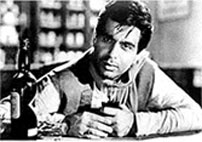
Fig. 6. Dilip Kumar in Bimal Roy's Devdas (1955).
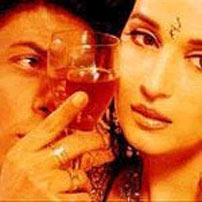
Fig. 7. Sharukh Khan & Madhuri Dixit in Sanjay Leela Bansali's Devdas (2002).
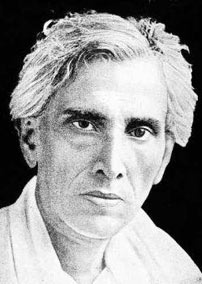
Fig. 8. Both Devdas films are based on Sarat Chandra's foundational novel Debdas written in 1901.
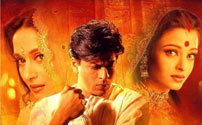
Fig. 9. Khan-Devdas in Devdas II enters clad in designer Western regalia, replete with hat and bow-tie, and coolly lights up a cigarette. |
|